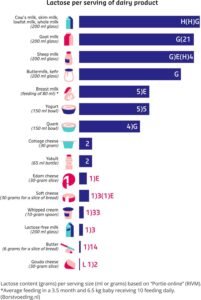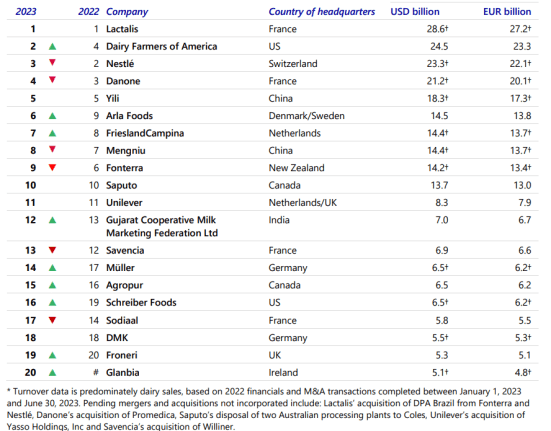Executive Summary
In India, a country where milk is more than just a beverage—it’s a symbol of nourishment, culture, and economy—the debate around lactose intolerance has taken on outsized proportions. Recent narratives, often amplified by the plant-based movement, suggest that a majority of Indians are lactose intolerant. But how accurate is this claim?
In an in-depth conversation with Dr. Stephan Peters of the Dutch Dairy Association, combined with recent scientific findings, Dairy Dimension examines the critical difference between lactose maldigestion and lactose intolerance, debunks common myths, and offers a science-backed perspective on dairy’s role in Indian nutrition.
Understanding the Basics: Maldigestion vs. Intolerance
Lactose maldigestion refers to a reduced ability to digest lactose due to diminished lactase enzyme activity. Lactose intolerance, on the other hand, occurs when this enzymatic deficiency results in noticeable gastrointestinal symptoms, such as bloating, gas, or diarrhoea.
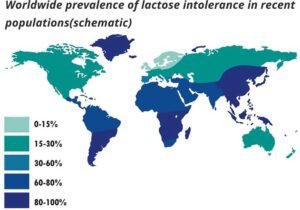 Dr. Peters explains: “Most people with lactose maldigestion don’t experience symptoms. True lactose intolerance, with clinical symptoms, is far less common.”
Dr. Peters explains: “Most people with lactose maldigestion don’t experience symptoms. True lactose intolerance, with clinical symptoms, is far less common.”
The global conversation often conflates these two conditions, leading to exaggerated estimates and unnecessary dairy avoidance.
Are 70% of Indians Lactose Intolerant? Unpacking the Misleading Maps
Many global maps categorise India as having a 60–80% prevalence of lactose intolerance. However, these figures are often based on genetic predisposition (lactase non-persistence), rather than actual symptom-based diagnosis.
“These maps reflect potential maldigestion, not intolerance. They’re based more on race than real clinical data,” Dr. Peters cautions.
In India, most people regularly consume fermented dairy products (such as curd, buttermilk, and paneer) without issue. Anecdotal and field evidence suggest the true prevalence of intolerance is much lower than often claimed.
The Dairy Matrix: Why Not All Dairy Is Equal
Fermented dairy products like curd, yoghurt, and cheese are naturally low in lactose due to the action of lactic acid bacteria. These products often:
- Contain beneficial probiotics
- Are easier to digest
- Deliver key nutrients like calcium, vitamin B12, and high-quality protein
Dr. Peters notes, “If you’re worried about symptoms, try fermented dairy first. It’s nutritious and usually very well tolerated.”
Self-Diagnosis: A Bigger Problem Than Lactose
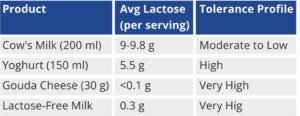 Many people today self-diagnose lactose intolerance based on general symptoms such as bloating or gas, which could stem from stress, poor diet, or irritable bowel syndrome.
Many people today self-diagnose lactose intolerance based on general symptoms such as bloating or gas, which could stem from stress, poor diet, or irritable bowel syndrome.
“Doctors often tell patients to just avoid milk if they complain, without proper testing. This creates a false confirmation loop,” says Dr. Peters.
He emphasises the need for scientific diagnosis via tests like the hydrogen breath test or elimination diets to confirm true intolerance.
Can You Train Your Gut to Digest Lactose?
Yes. Recent studies have shown that gradually increasing lactose intake can help some lactose-intolerant individuals tolerate dairy products better over time. This is due to changes in gut microbiota, particularly the increase of beneficial bifidobacteria.
“Lactose tolerance is dose-dependent. Even lactose-intolerant people can often tolerate 12g per meal, equivalent to a glass of milk,” he adds.
In India: Dairy Is Not Optional
India is already a protein-deficient country, and dairy is a crucial source of affordable, high-quality nutrition, especially for vegetarians. Removing dairy from diets without cause may worsen malnutrition and child stunting.
“In countries like India or South Africa, dairy can prevent stunting. Removing it due to a misunderstood intolerance is nutritional malpractice,” warns Dr. Peters.
Industry and Policy Takeaways
For Policymakers:
- Clarify public communication on maldigestion vs. intolerance
- Promote dairy in public nutrition programs to combat stunting
For Industry:
- Reduce added sugars in dairy products to preserve health claims
- Improve lactose-related labelling transparency
- Highlight low-lactose options like curd, cheese, and yoghurt
For Consumers:
- Don’t self-diagnose
- Experiment with different dairy types
- Consult a dietitian for personalised guidance
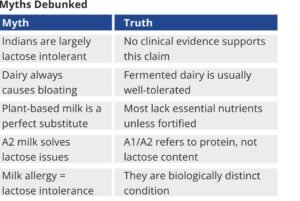 Conclusion: Dairy as a Driver of Nutrition Equity
Conclusion: Dairy as a Driver of Nutrition Equity
As Dr. Peters reminds us, “Plant-based doesn’t mean plant-only. And sustainable diets must also be nutritionally sufficient. “In a country where milk is both livelihood and lifeline, India must reject the simplistic narratives of Western dietary trends. With scientific understanding, proper labelling, and improved public awareness, dairy can continue to nourish generations without unnecessary fear.
